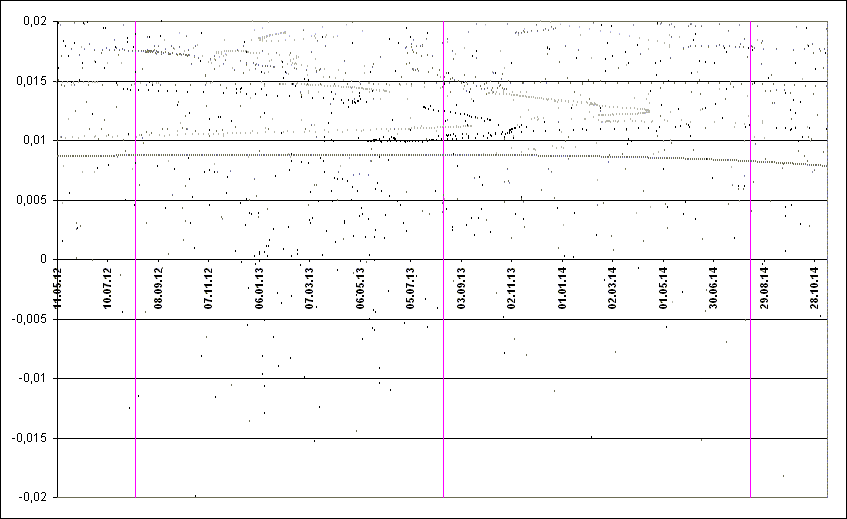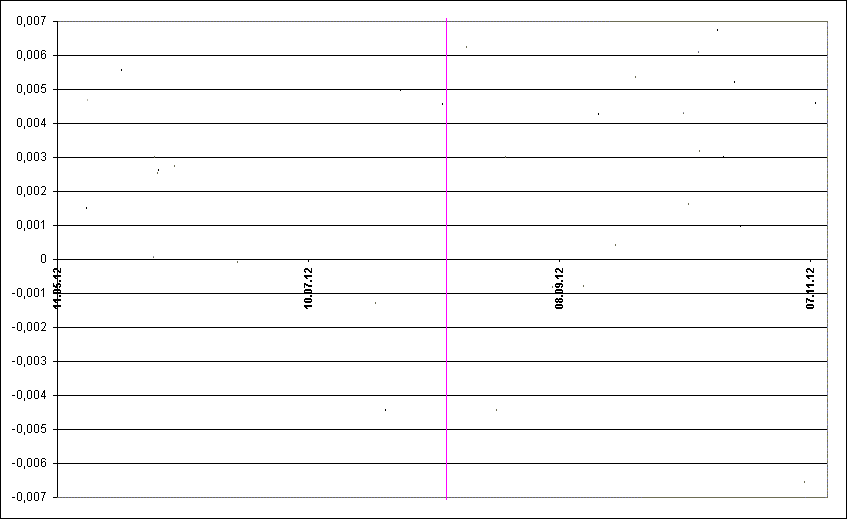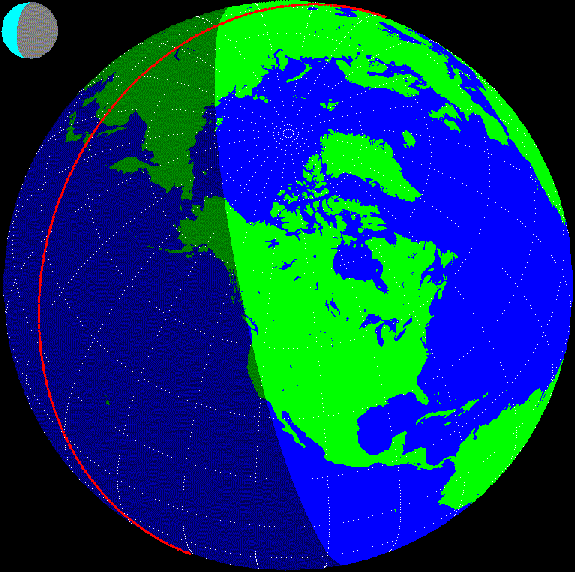Perseids 2012: prediction of activity
to the list of predictions

Fig. 1. Space-temporal projection of Perseid trails parts onto their minimal distance passages dirung the period (correspondence between colours of the particles and their ejection velocities can be seen here).

Fig. 2. Detailed space-temporal projection of Perseid trails parts onto their minimal distance passages in 2012 (correspondence between colours of the particles and their ejection velocities can be seen here).
In 2012 the background Perseid activity is expected to be normal with ZHR about 100. Significant encounters with trails are not found.

Fig. 3. The Earth as seen from coming Perseid meteors (Radiant: (RA=48°, Dec=+58°) during the background maximum at 13:19 UT 13 August. Red line shows the border of hemisphere where the Moon is above horizon (it is shown with in the corner of the Fig. 3 according to its phase).
As shown on the Fig. 3, the best conditions for background maximum observations will be northern part of the Pacific ocean. Considering that shower maximum is quite broad and lasts for several hours, observers in North America (especialy on its western part) and very north-eastern parts of Eurasia will also be able to see activity levels close to maximum ones. The waning Moon crescent will rise closer to the dawn and won't create significant trouble for observers.
Ссылки
1. "Comet's dust 2.0" program by S. Shanov and S. Dubrovsky. [Used for orbital computations.]
2. Information from Gary W. Kronk's page http://www.maa.agleia.de
3. Lyytinen E, van Flandern T. "Predicting the strength of Leonid outbursts", 2000, Icarus, P. 158-160.
4. Jenniskens P. Meteor showers and their parent comets, 2006, 780 p.
Ссылки
1. "Comet's dust 2.0" program by S. Shanov and S. Dubrovsky. [Used for orbital computations.]
2. Information from Gary W. Kronk's page http://www.maa.agleia.de
3. Lyytinen E, van Flandern T. "Predicting the strength of Leonid outbursts", 2000, Icarus, P. 158-160.
4. Jenniskens P. Meteor showers and their parent comets, 2006, 780 p.